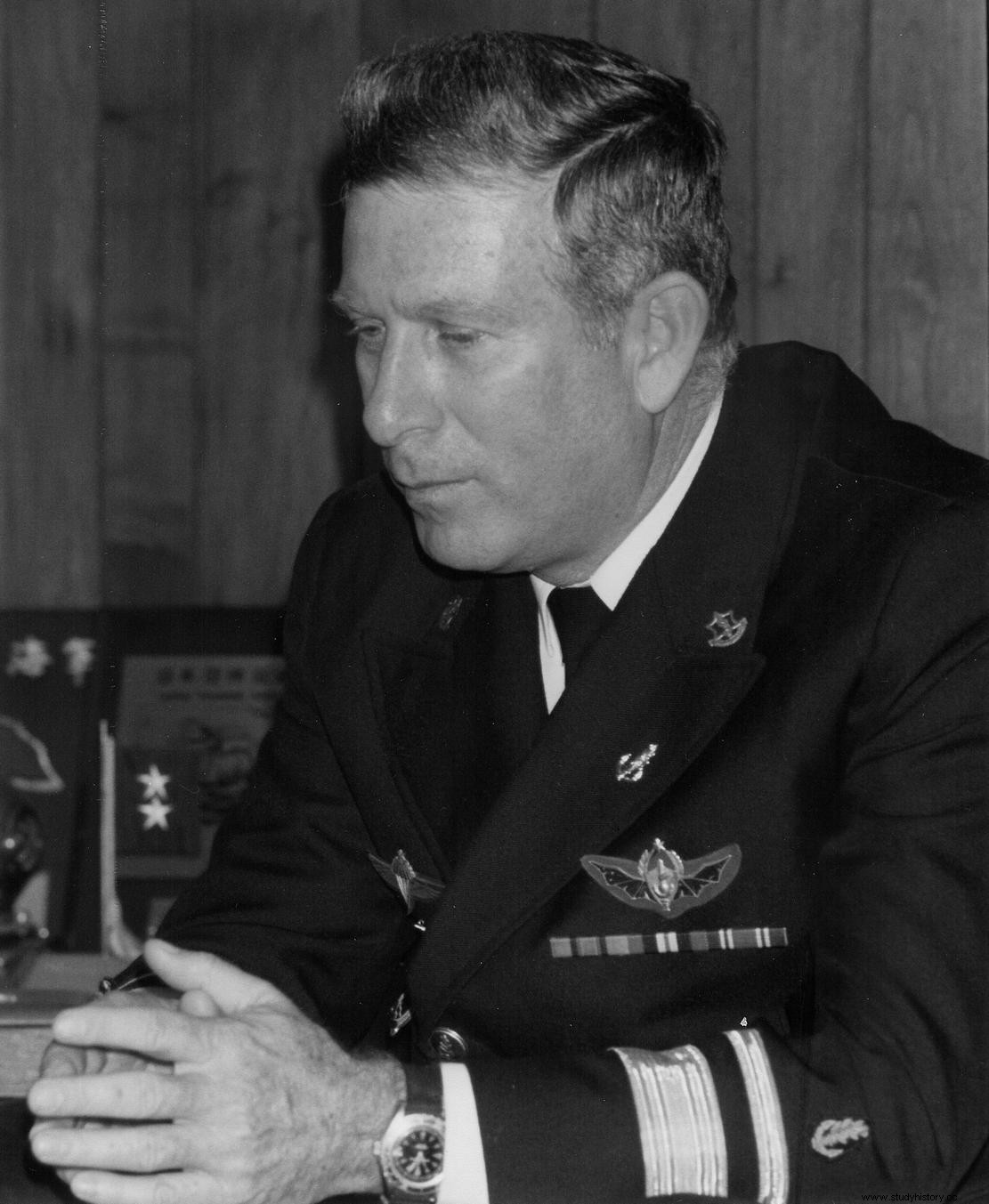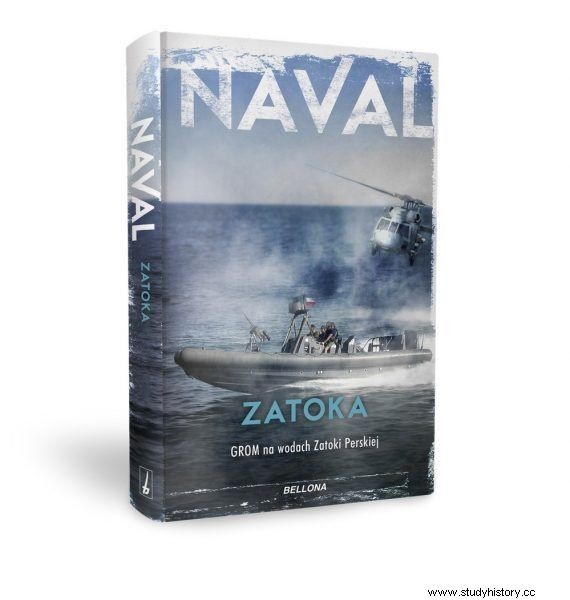Their operations became legendary, and then became a source of inspiration and experience for troops around the world. Also Polish. Are the Israeli commandos the best in the world?
In the summer of 1969, during the war of exhaustion between Israel and Egypt, Israeli troops were regularly harassed in the Sinai. The Jews suffered enormous losses and morale continued to decline. In order to raise them, the command decided to conduct an effective deterrent operation. It was also hoped that a sudden and effective attack would force the Egyptians to adhere to the ethos of the ceasefire.
Zeew Almog, commander of Szajetet 13 (naval commando units), developed a plan to attack the Egyptian early warning radar located on the Green Island. Jazirat al-Khadra, as the island was called by the Egyptians, was about four kilometers from the mouth of the Suez Canal. It was built by the British during World War II.
It was a series of concrete bunkers surrounded by rows of barbed wire, less than three meters above sea level. According to intelligence findings, the garrison consisted of approximately seventy Egyptian infantry and twelve commandos of the As-Sa'iqa unit. They had fourteen machine guns, two AA cannons and four 85 mm cannons.

The plan for the Green Island operation was drawn up by the Israeli Commander Zeew Almog.
It was a difficult target, so the task fell to the most experienced in sea operations commandos Sajeret Matkal and Szajetet 13. It was planned that the assault unit would move in twelve pontoons. The first five included twenty Szajetet 13 commandos, the remaining ones - twenty soldiers of Sajeret Matkal. They were to swim the last kilometers, hitting the island by surprise. The operation was codenamed "Bulmus 6".
A blow to the Green Island
On July 19, 1969, the commandos went into action. After two hours of walking, the first to get into the water were the divers from Szajetet 13. They settled on underwater vehicles called "Pigs". Were it not for them, commandos carrying oxygen cylinders, grenades, spare ammunition and other equipment would not have a chance to reach the shore. Such vehicles are still used today.
- Underwater it is an irreplaceable means of transport not only for the diver. It also allows you to take additional equipment. These vehicles increase the distance and time divers can operate - says Naval, former soldier of JW GROM and author of the book Zatoka in which he presents the operations of Polish maritime specialists in the Persian Gulf.

The article was inspired by Navala's newest book titled “Zatoka. GROM in the waters of the Persian Gulf ”(Bellona 2017).
Unfortunately - "Pigs" was not enough, the gear was too heavy, and the sea currents turned out to be stronger than expected. The commandos were lifted more than 600 meters from the target. They had to make up for lost time. Eventually, more than two hours later than the scheduled start of operations, the commandos reached the front line of the Egyptian entanglements. The soldiers dealt with the obstacle very quickly. The road to the island was open. Naval explains the ease with which the commandos got to the island:
- Today's technique goes much further than hanging underwater nets and mines. I am talking about all kinds of underwater sensors, radars that warn about the appearance of an unidentified object in the area .
Battle
As Michael Bar-Zohar and Nissim Mishal wrote:
The soldiers who hid under a small bridge saw three Egyptian sentries, one with a lit cigarette in his hand. (...) The commander of the reconnaissance group was afraid that his sub-unit would be discovered, so he decided to surprise the Egyptians by opening fire on the sentries and fired the first shot in the operation. The battle has begun .

Today it is much more difficult to sail unnoticed to the area of enemy facilities. The photo comes from the Navala book titled "Zatoka" (Bellona 2017).
Egyptian response to the first strike was uncoordinated. Soon, however, the island crew formed a very tough defense. On the island, which is less than 150 meters long, grenade launchers, heavy and light machine guns were fired at each other, and individual bunkers decided to call for the support of heavy coastal artillery.
The commandos of Sajeret Matkal, who were to start in the second throw, waited for the agreed sign to start the attack. Time passed and there was no signal. However, when the rockets illuminating the darkness of the night flared above the island, and the sounds of fighting reached the ears of those waiting - the boats set off to attack. After a quarter of an hour the commandos landed on the shore, making their way with grenades. This is how they got to the main building. The soldiers were divided into two groups:one went up to the roof, the other - was to clean the shelter rooms.
- Searching such objects is exhausting, and you can't afford to miss anything. Each room is thoroughly checked, insuring each other - explains Naval, which searched the smuggling ships in the waters of the Persian Gulf.

Searching both shelters and smuggling ships is exhausting. The photo comes from the Navala book titled "Zatoka" (Bellona 2017).
Years later, Lieutenant Ami Ajalon recalled:
I threw a smoke grenade to have at least a small cover (...) and shouted to Zaly (Zalman Rot), who also went upstairs to attack the enemy with me but the grenade did not explode. I threw an offensive grenade at the position from which we were fired, but it didn't work either. Zali threw a grenade at the machine gun on the left and then, firing continuously with the submachine gun, I reached Egyptian Position No. 2. We were fired from Position No. 10, from where I was also shot earlier. We responded with fire. The Egyptian caemist collapsed and the position started to burn .
Retreat
After forty minutes of fighting, Zeev Almog reported to the staff that the opponent was weakening. Moments later, a huge explosion shook the island, and a tall fountain of fire and smoke shot high into the sky. The fort was swept off the bay. A few minutes later the commandos began to retreat. The Israelis lost six soldiers, eleven were wounded. For the Egyptians, it was a real disaster. Almost all of the island's defenders died - out of approximately one hundred and ten soldiers, only thirty remained.

He took part in the fights on the island, among others Rafael Ejtan, Commander of the Infantry and Paratrooper Corps at the time (in this 1955 photo he is seated first from the right).
Operation "Bulmus 6" has fulfilled its purpose. Both Egyptians and Israelis believe that the destruction of the island was a turning point in the ongoing War, not exhaustion. From that July night onwards, the Egyptians slowly began to lose operational initiative.
Rafael Ejtan, the commander of the Infantry and Paratrooper Corps at the time, who fought on the island at the time, later recalled:
The Rally to the Green Island was exceptional because of the tremendous success of the action. The operation itself was a great achievement, in which we paved the way for a new method of combat, strengthening our safety. The Egyptians, even in their worst nightmares, had never dreamed of such a daring operation. During the campaign, we demonstrated the possibilities and level of training that were a benchmark for many years to come .
Buy the latest Navala book from empik.com:

